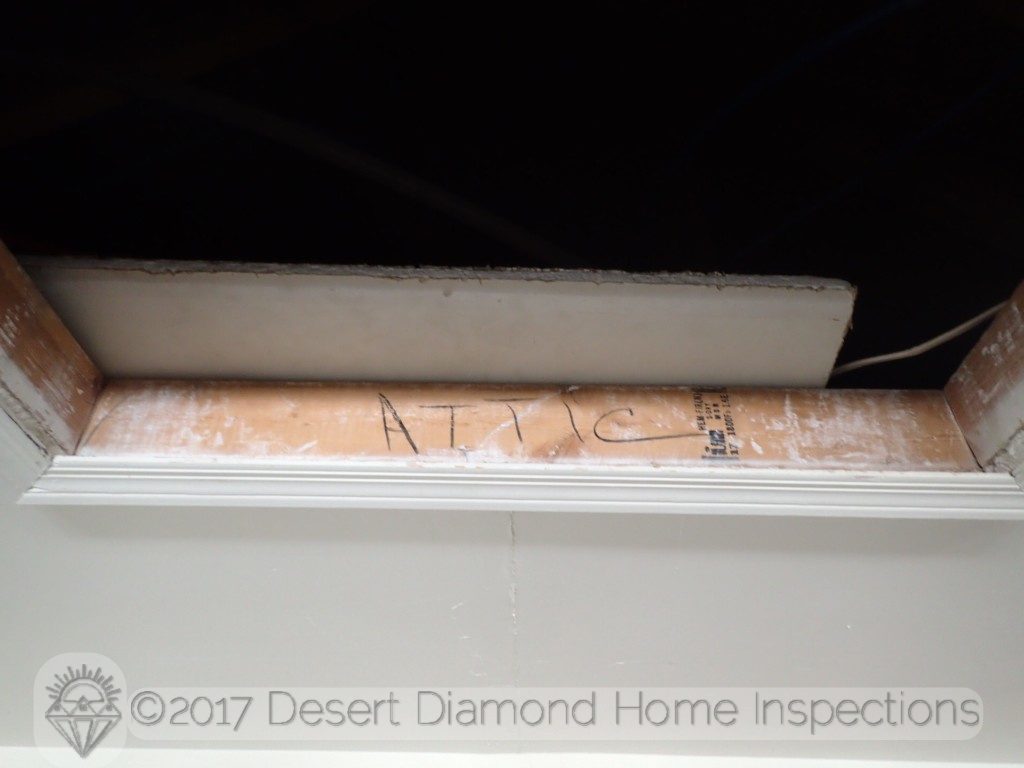If your home has an attic, you should give it some attention and check for shenanigans. There are quite a few issues that can lurk in attics that can cause big problems if they go unnoticed for a long time.
If your home does not have an attic, you can obviously skip this article. Or you can ask your neighbor if they will let you inspect their attic. Though that might be weird…
Caution
Inspecting an attic is a dangerous activity. There are many opportunities to hurt yourself or cause damage. Unless you are competent and comfortable doing this yourself, you should have a trained professional help you with this.
If you do decide to take this on yourself, be sure to wear gloves and sturdy shoes, use proper ladder safety, watch your head, and watch your step/know where to step. Significant others do not appreciate a foot making an unexpectedly appearance through the ceiling – or so we’ve heard.
In the summer time, attics get very hot – about 150 F. Inspect the attic on a cooler day or when it’s been raining, and do not stay more than 10 minutes.
In this article, you will find a selection of the most common problems lurking in attics. The list is not all-inclusive, but highlights important problems that a homeowner can spot without specialized training.
Unsafe electrical
In many attics, there are unsafe electrical connections (splices) that are exposed and not enclosed in proper junction boxes. This is a potential fire hazard and needs correction.
Check your attic for any of the following electrical issues:.
- Exposed electrical connections that resemble those shown in the photo
- Wires that are not connected to anything
- Cabling with damaged or missing insulation, showing bare wires
- Cabling with signs of scorching
If you see any of these issues, immediately call a qualified licensed electrician to correct them.
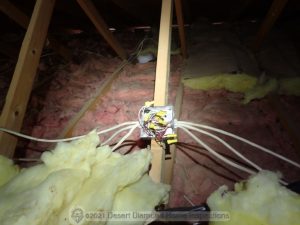
Unwelcome residents
If the attic is not properly sealed off against pest intrusion, chances are that rodents, lizards, birds, bats, or other critters will find their way in eventually.
Check your attic for any signs of pest intrusion such as:
- Nests
- Droppings
- Tracks
If you see any, call a qualified pest control professional for a proper and permanent solution.
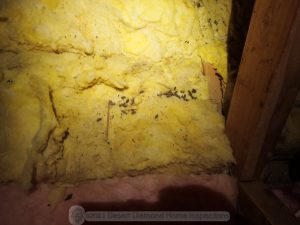
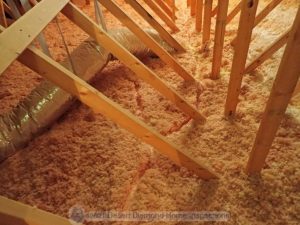
Moisture damage
If you have a roof leak, the evidence will be visible in the attic long before you can see it inside the home. You want to catch any leaks as early as possible to minimize repair costs.
Check your attic for signs of moisture intrusion. Most likely this will be staining or wood rot at the roof structure (the wood trusses or rafters).
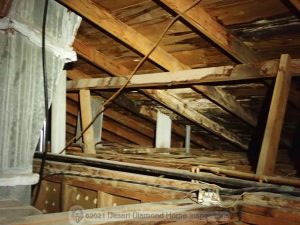
Sometimes moisture intrusion shows up in form of stains on the insulation in the attic, or an area of insulation that is collapsed/depressed due to moisture.
Separated or damaged vents and ducts
In most attics, there are various vents and ducts. These include bathroom fan vents, dryer vents, and heating and cooling ducts. It is possible due to age, improper installation, or other factors, that they become damaged or detached.
The photo below shows a bathroom fan vent that came loose and is no longer venting out the roof as intended (see top right). As a result, the moist air from a bathroom is now vented into the attic which is not good.
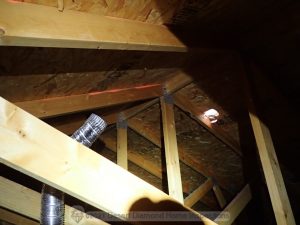
Check for issues with air ducts for heating and cooling. There are two potential problems:
- Detached ducts
- Damaged ducts
The next photo shows an air duct that came loose. As a result, the system is now blowing hot or cold air into the attic. That is obviously a waste of energy and money and needs to be corrected by a qualified licensed HVAC professional.
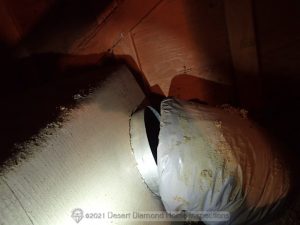
The next photo shows an air duct that is falling apart. The insulation is peeling away from the duct. This exposes the duct to the hot or cold air in the attic which reduces the efficacy of the system. That is obviously also a waste of energy and money and needs to be corrected by a qualified licensed HVAC professional.
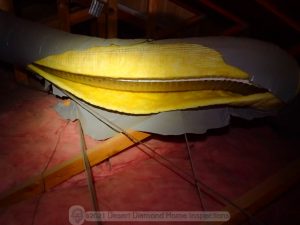
The next photo shows an example of a dryer vent pipe that separated in the attic. As a result, the dryer is now blowing lint all over the attic as seen in the photo. Dryer lint is extremely flammable and this is a fire hazard.
If you see a dryer vent pipe disconnected in the attic, and a bunch of dryer lint all over the attic, stop using the dryer!
Clean up the dryer lint and repair the vent pipe before resuming use of the dryer.
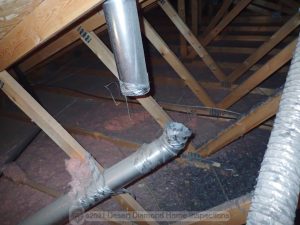
Insulation issues
There are several different types of insulation commonly found in attic in this area:
- Fiberglass batt
- Loose-fill fiberglass
- Loose-fill cellulose
- Mineral wool
- Spray foam
When inspecting the insulation in your attic, check for the following:
- That there actually is insulation. There are many old houses that have none!
- That the insulation is evenly installed throughout the attic
- That the insulation is at least nine to ten inches deep. Depending on the insulation type, that is about the required minimum standard in this climate region. Obviously, the more, the better.
- That there are no wet spots on the insulation
- For fiberglass batt: If it has a craft paper backing (a.k.a. vapor barrier), it should not be visible. The paper is flammable and should not be left exposed as clearly printed on it (see next photo).
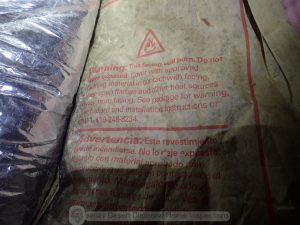
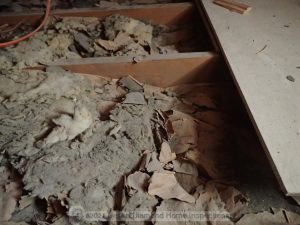
Structural damage
Whether the house has engineered wood trusses or conventional rafters, check for any damage. If there are cracked, broken, or detached members of the roof structure, they must be repaired right away. After all, they help carry the load of the roof.
The next photo shows an example of a broken truss component.
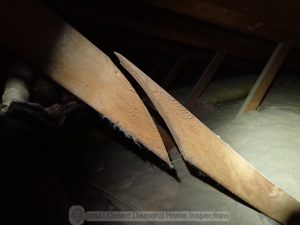
If you see any damage to rafters or wood trusses, you need to call a structural engineer and have it professionally repaired. This is NOT a fix for a handyman!
When
Put an attic inspection reminder on your calendar twice a year. For example, in February and August.
Conclusion
Regular attic inspection can avoid some major issues. Once again, proactive home maintenance can prevent unpleasant surprises and expenses, and help keep your family safe.

